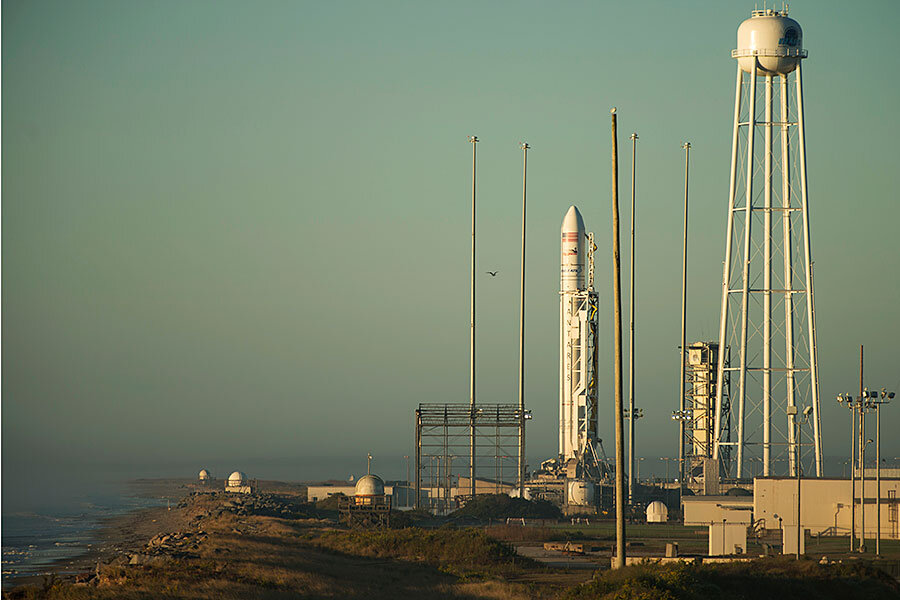Two years after fiery catastrophe, Antares poised to fly again
Loading...
It was to be Orbital ATK’s big comeback moment, but Sunday’s highly anticipated launch of its Antares rocket, which had been grounded for two years, had an anticlimactic moment when it was canceled by a faulty cable.
“Oh, how disappointed I am!” tweeted one of the company’s followers, @GrpShawna, on Sunday.
The Sterling, Va.-based aerospace and defense contractor is set to try again to launch 5,000 pounds of supplies to the astronauts working aboard the International Space Station (ISS) on Monday at 7:40 pm EDT from Virginia’s Wallops Island. Given clear skies, the launch should be visible along most of the East Coast, including Washington, New York, and Boston. Those in other parts of the country can watch a live webcast Monday night on NASA TV.
The ISS supplies are packed into Orbital’s Cygnus capsule, which will be delivered to the ISS by Antares a few days after the launch. The rocket, which has been grounded since it exploded on the launchpad within seconds of liftoff two years ago, likely will have to orbit Earth for several days before docking with the space station. Its circuitous route is meant to make room for a launch of three astronauts from Kazakhstan on Wednesday. They will join the three already aboard the orbiting space lab.
Orbital spent two years redesigning its rocket and rebuilding the launch pad. It replaced an old Russian-built engine with a newer one, also built by a Russian company. In the meantime, it continued delivering cargo to the ISS under a $1.9 billion contract the company had signed with NASA, using other companies’s rockets. By the time Antares was ready for launch again on Sunday, there was great anticipation from the space community.
"This is a very exciting time for us at Orbital ATK," Frank Culbertson, Orbital's space systems president, said the night before Sunday’s launch. "A lot of hard work has gone into this."
Orbital is one of two private companies hired by NASA to deliver cargo to the space station. The other is SpaceX, which also has faced major technical setbacks. Just last month, a test of its Falcon 9 rocket at Cape Canaveral ended in an explosion on the launch pad. SpaceX's explosion is not expected to cause major cargo-delivery delays, according to the company, which says it could resume delivery in November.
SpaceX, along with Boeing, are expected to start ferrying astronauts to the space station in the next couple of years. Today only Russia can launch humans to space aboard its Soyuz rocket. As USA Today reported in 2015, it costs US taxpayers about $75 million for every ride to the space station, a sum that could rise to $82 million in 2018.
This report includes material from the Associated Press.






